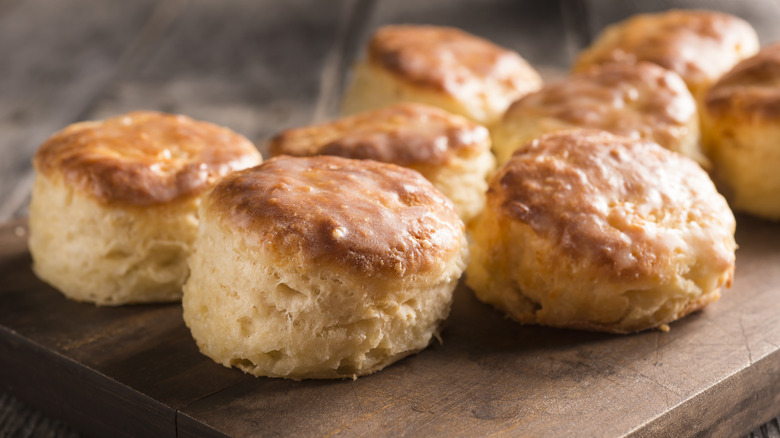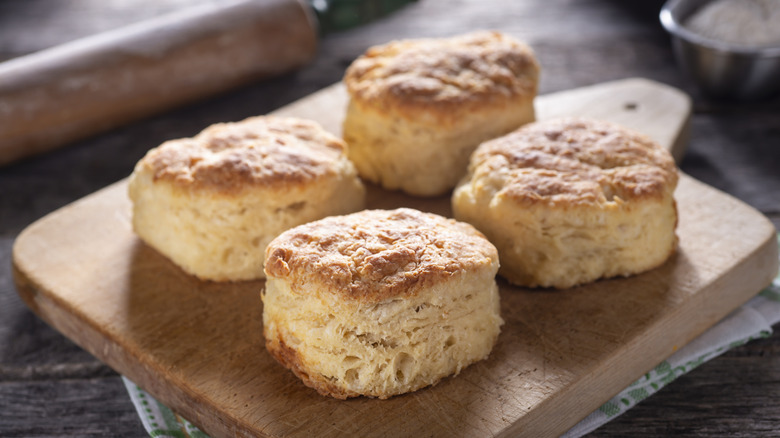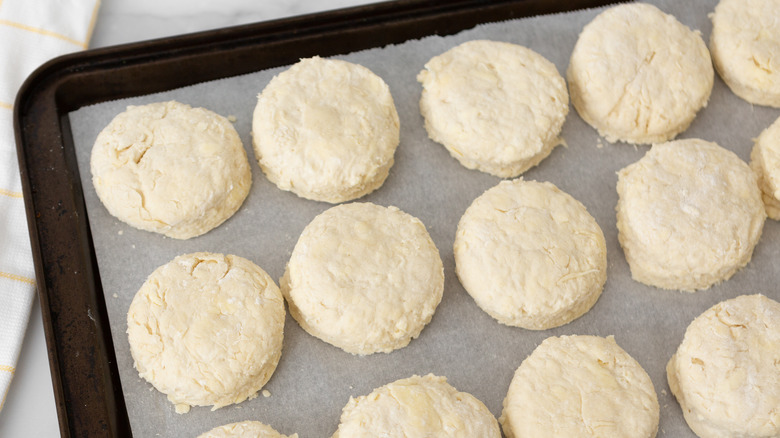Butter Vs Lard: Which Is Best For Biscuits?
Few things go together quite like biscuits and butter. So, when it comes to buttering your biscuit, having the spread on hand will always be key. When baking a batch of biscuits, though, butter may not be the best ingredient to include. As it turns out, lard might actually be better, depending on your taste.
When it comes time to choose which fat to mix into your homemade biscuits, there are pros and cons to both traditional butter and lard. It's key to consider the traits you find most important in a delicious biscuit before you choose the fat you'll be using for baking.
Biscuits' flaky layers are one thing that tends to set them apart from other baked goods. As a result, something that most folks seek out in a biscuit is that perfect flakiness. The way lard cooks in comparison to butter will give you a flakier, fluffier result. So, if you consider flaky biscuits to be the best, then you may want to save the butter for when the food is freshly made. If you're unsure, though, have no fear. We've got all of the info you need to make an informed decision.
The pros of biscuits baked with butter
Most people likely think of butter first when they're buying ingredients to use for baking biscuits. After all, it's a more common baking ingredient than lard. Biscuits made with butter do have some desirable traits. For starters, butter will, of course, give your biscuits that beloved buttery taste. Butter also has sugars in it that become caramelized when cooking. This can add a bit of subtle sweetness to your food.
How a baked good looks is certainly not the most important thing to consider when baking, but it's still important, and if you want a biscuit that looks particularly delicious, then butter is the way to go. Because of the caramelization, biscuits baked with butter get that golden brown surface that looks oh-so appetizing.
Baking biscuits with butter will also cause them to rise higher than those baked with lard. Butter contains more water than lard, creating additional steam during the baking process. It's this steam that lifts the biscuits during baking. While no one is going to be disappointed with a buttery-tasting, tall biscuit, there are other aspects to the food you might want to prioritize.
Why lard may be a better pick
Lard will give your biscuits one thing that may tip the scales in its favor for many bakers. It can make your biscuits flakier for reasons inherit in the chemical composition of lard. Because lard is pure fat and contains less water than butter does, the biscuits will end up shorter. At the same time, lard melts at a higher temperature than butter does, which means it takes longer to melt when it's baking. Consequently, air escapes more slowly from lard than butter, and this gives you an airier and fluffier biscuit.
There won't be any caramelization involved when baking with lard, so you won't get that buttery, slightly sweet flavor. Instead, lard lends a more savory flavor. The differences in taste are neither innately good nor bad. It might be worth doing a taste test to determine your personal preference. If the savory flavor and coveted flakiness are enough to have you heading to the store to pick up some lard, then it's important to keep in mind that quality is vital here. Lard is pig fat, and the toxins in a pig's body are stored there, so research where you're getting your lard from. Whether you use butter or lard, high-quality ingredients will create a high-quality biscuit.


